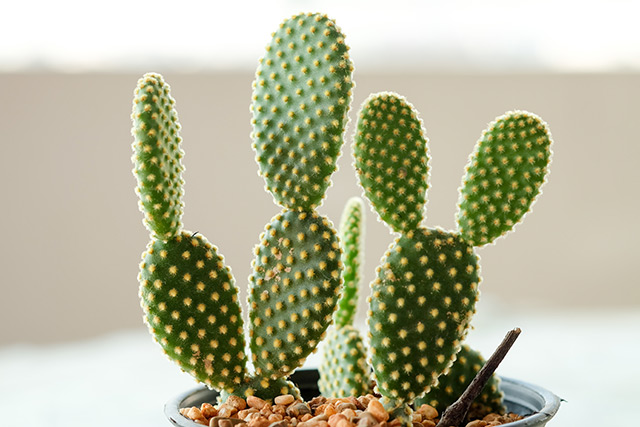
The study was carried out by a team of researchers from Tunisia and Italy who evaluated the analgesic and the anti-inflammatory activity of the bunny ears cactus at the post-flowering stage in mice.
The research team examined the analgesic and anti-inflammatory activity of the plant's flower extracts by using the acetic acid writhing test and the carrageenan?induced paw edema assay in mice. They also conducted the Allium cepa test to measure the antigenotoxic effects of the bunny ears cactus plant.
Based on the results of the tests, the flower extracts of the bunny ears cactus showed a greater analgesic and anti-inflammatory activity at a dose of 100 milligrams per kilogram (mg/kg). In addition, the bunny ears cactus flower extracts had a preventive antimutagenic potential against DNA damage.
Therefore, the research team concluded that the flower extracts of the bunny ears cactus at post-flowering stage may be used as an analgesic, anti-inflammatory, and antimutagenic agent.
More on the bunny ears cactus
Bunny ears cactus, also known as polka-dot cactus, is a clump-forming Mexican cactus that has no central stem or leaves. However, it has individual segments wherein the oval-shaped pads of the plant form. These new segments grow in pairs, looking like bunny ears. New segments are red in color and eventually turn dark green as they grow. The cactus' creamy yellow flowers only sprout from the terminal ends of segment pads. They begin to sprout in late spring and peak in early summer with 2-inch wide blossoms. The bunny ears cactus plant can grow 2 to 3 feet tall and up to 6-feet wide outdoors.
Growing this houseplant can be easy. It grows well in temperatures ranging from 70 to 100 degrees Fahrenheit (21 to 37 degrees Celsius) and prefers low humidity conditions. However, it needs cooler temperatures during the winter months. It needs full light for the most of the year to grow properly. During its first season, it must be watered regularly in a new pot to establish a strong root system. The soil should not be soggy, but moist. Since it is a desert species, it will only need to be occasionally watered, unlike the first season. During the winter, it should not be watered at all. Watering should resume during the early spring.
Other herbal plants that are natural analgesics
There are many plants that act as natural analgesics. Some of the commonly used herbal plants for pain relief include the following:
- Cloves: Although often used as a spice, cloves are also used for healing purposes. They can help relieve pain associated with headaches, arthritic inflammation, and toothaches. They are also used to relieve nausea and treat colds. As a medicine, cloves are available in capsule or powder form.
- Turmeric: More than just a spice, turmeric contains an antioxidant called curcumin, which can help protect the body from free radical damage. It is also used to treat conditions such as indigestion, ulcers, stomach upset, psoriasis, and cancer. In some cases, people with osteoarthritis use this spice to relieve pain due to inflammation.
- Willow bark: For centuries, willow bark has been used to relieve inflammation, the cause of most aches and pains. This herb can be used to relieve headaches, low back pain, osteoarthritis, and others. It is available as a dried herb that can be brewed like tea, as a liquid, or as a capsule. (Related: 7 Powerful analgesic (Pain Relievers ) That Grow On Plants.)
Read more news stories and studies on natural analgesics like the bunny ears plant by going to AlternativeMedicine.news.
Sources include:
Please contact us for more information.























